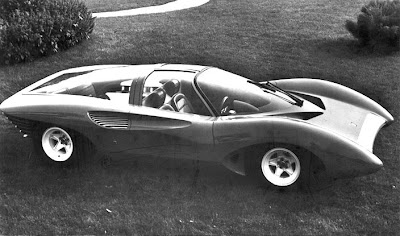By
the mid 1960s, Ferrari’s racing program encountered some turbulence. Following
the infamous “palace revolt” of 1961 (where several key personnel permanently
walked out of the factory, undoubtedly throwing Enzo’s mojo way off), things soon recovered
by Ferrari's overachieving to win Le Mans from 1960 to 1965. Ferrari’s
NART 250LM won in 1965 (driven by Jochen Rindt and Masten Gregory) but a red car was never to win at Le Mans again: The 330 P3s for Le Mans 1966 did not
equate to winning positions, certainly influenced by the departure of then-top
driver John Surtees in a team management dispute just prior to the race.
The
subsequent 1-2-3 formation victory finish by Ford’s GT40s at the 1966 Le Mans
cast a long shadow over Maranello, with the crowning achievement of Enzo’s defeat
embodied in the Ford victory, unsettling him to deeply personal levels. Not
merely symbolic, the GT40 was a vendetta realized --clearly signifying who had
really “won” in the soured deal between Enzo and Ford (the latter of which was
to buy Ferrari’s factory production).
Immediately
following the 1966 losses, Enzo set out to win for 1967 in the Formula 1
Championship (Ferrari 312) and Sports Prototype Cup (330 P3s with tipo 603
gearboxes, jettisoning the unreliable ZF units of the prior year). Ferrari’s P3s
and P4s won the World Championship for 1967, with the 312s not winning the ’67 F1
championship due to fatalities and injuries.
Although
ultimately choosing not to participate in the Prototype Cup for 1968 due to
regulation changes, the P4s were modified to race later in the ’67 season in
the North American Can-Am series and then in 1968 to race in
Australia; 1969 in South Africa. However, this gap year in Ferrari’s prototype
program created an opportunity to work on other things, including a 6.0 litre
Can-Am barchetta and a show car for publicity purposes. The show car is the
item of interest here:
Enter the 250 P5 Berlinetta Pininfarina Speciale, debuting at the Geneva Motor Show for March
13, 1968. Under the direction of Leonardo Fioravanti, Pininfarina created an eight-headlamp
berlinetta body initially mated to chassis 0862 (whose original function was to
house a newly developed, but not yet running, 180º 2.0 litre V12 engine,
intended initially for use in an aircraft, but ultimately used in Ferrari “Tipo 600,” a Sports-Prototype
barchetta that became the 212E).
During
the course of the year on the show circuit, things changed and Ferrari needed
to develop a usable race car. P5’s chassis 0862 was commandeered and rebodied
and raced as the Ferrari 212E Dino in the 1969 European Hillclimb Championship (driven
to unbeaten victory by Peter Schetty). Seeking somewhere else to go, P5’s body
was then placed upon an Alfa Romeo 33/3 chassis whereupon it received a
facelift and Alfa badging.
The
more conservative styling of the Alfa version likewise made the P5 less of a
show concept and more of a usable road-going car. Yet the physical P5 was gone
forever, restyled, rebadged, lost in the mists of time. However its legacy can be found to be prominently alive
today: As it was borne in a “gap year,” so was the P5 an element that bridged a
gap between distinct Ferrari identities, a coming of age within the Enzo era
cars.
To illustrate, many of the P5’s styling cues
resurfaced years later on iconic Ferrari models, such as demonstrated in the
side-straking/air-directing motif --the main identifier of the 1980s/90s Testarossa,
512 TR, 512 M. This also appears on the Mondial and 348. Aerodynamic cues and
body surfacing found on the P5 can be seen to echo in the F50, featuring nose
vents at the base of the windshield. The general aerodynamic shape, a glass
window over the engine, wheel arches, and airflow management over, through, and
away from the body foretold the future as Ferraris modernized, becoming more
and more wind tunnel reliant.









Cool thanks for sharing.
ReplyDeleteyou're welcome
ReplyDeleteSo many styling elements that can be seen in latter Ferrari's Great images Chad! Can you imagine driving it around town and at freeway speed? The stuff of dreams ... Thanks
ReplyDelete